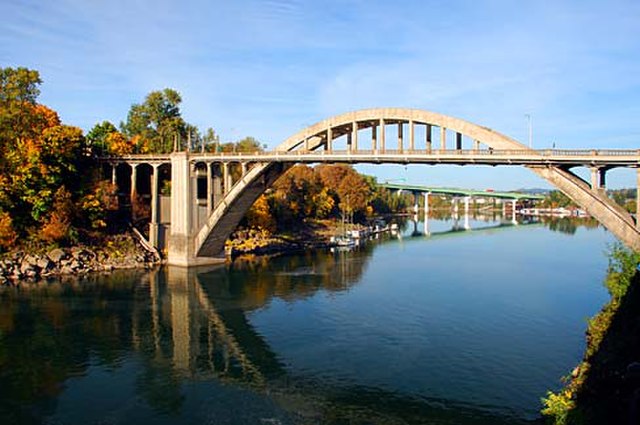
Bridges across Oregon are getting older, creating a major backlog of transportation infrastructure repair. The Oregon Department of Transportation (ODOT) recently released its 2024 Bridge Condition Report, revealing that approximately 1,000 bridges built during the Interstate Era (1958-1973) are approaching the end of their service lives, creating a looming wave of necessary replacements that current funding cannot adequately address.
During the Interstate Era, ODOT constructed an average of 63 bridges annually, representing over one-third of the state’s current bridge inventory. These structures are now between 50 and 65 years old, with expected lifespans of 75-100 years. At the current replacement rate of just three bridges per year, only 75 bridges will be replaced between now and 2050, when most Interstate Era bridges will reach 90 years old.
“Current funding levels delay confronting this issue in a way that adds to the already heavy burden of replacing all the Interstate Era Bridges,” ODOT reports in the executive summary.
The agency estimates that replacing these aging structures within a 16-year period would require increasing the replacement rate to approximately 100 bridges per year—35 times the current pace.
The Bridge Condition Report shows concerning trends. The percentage of bridges in good condition continues to decline, with Oregon having the lowest percentage of National Highway System bridges in good condition compared to six neighboring western states. Additionally, substructure conditions are deteriorating faster than other bridge components, a particularly troubling trend since substructure issues often necessitate complete bridge replacement rather than repair.
The challenge extends beyond Interstate Era structures. With 670 bridges built before 1958 also requiring attention, ODOT calculates that increasing the bridge replacement rate to 15 per year starting in 2025 would help future generations manage the infrastructure burden while providing immediate safety and resilience benefits.
Sixteen bridges in Oregon had vehicle restrictions placed on them last year due to major defects, according to ODOT’s report. Only two bridges were replaced in 2024: the South Yamhill
River Bridge over Highway 18 McMinnville Spur and the bridge over Salt Creek on Highway 153 west of Amity.
ODOT has managed to replace only 149 Interstate Era bridges so far. The state spends more than $1 million annually just to replace deteriorated timber elements.
ODOT’s Major Bridge Maintenance program continues to provide critical support, addressing six bridges in poor condition and 63 others with urgent needs in 2023. However, as aging bridges require more frequent repairs, resources are increasingly diverted from cost-effective preventive maintenance, creating a cycle that accelerates deterioration.
Complicating matters, ODOT must now evaluate bridges for their ability to support specialized hauling vehicles and emergency vehicles with concentrated loads that far exceed the design parameters of older bridges. As a result, 417 state-owned bridges currently have load restrictions.
While ODOT continues to make progress on seismic retrofits for critical corridors like U.S. 97 and Oregon 58, and projects like the I-205 Abernethy Bridge improvements are underway, the report makes clear that a significant increase in bridge investment is necessary to maintain Oregon’s transportation network.
Photo Courtesy
Gary Halvorson, Oregon State Archives via Wikimedia Commons
The post Oregon must act quickly to replace 1,000 aging bridges before 2050, report finds appeared first on Government Market News.
